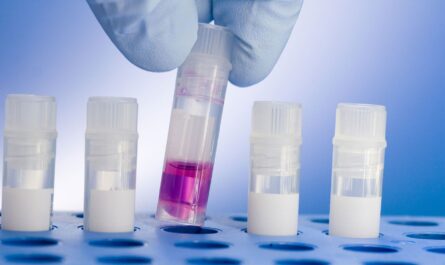
Opioid overdose deaths have reached epidemic levels in the United States. With overdose now being the leading cause of death for Americans under 50, communities nationwide have been searching for solutions. One potential lifesaver that has gained significant attention and support is the opioid overdose-reversing drug naloxone.
What is Naloxone?
Naloxone, commonly known by the brand name Narcan, is a medication that can rapidly reverse opioid overdoses. Opioids, such as prescription painkillers and heroin, slow down the parts of the brain that control breathing. This can cause breathing to slow down or stop, leading to death. Naloxone works by blocking opioid receptors in the brain and restoring normal breathing function within two to eight minutes of administration.
With naloxone available, an opioid overdose no longer has to be fatal. Public health officials and advocacy groups have been working hard to increase access and distribution of naloxone kits across the country in a strategic effort to curb overdose deaths.
Expanding Access to Naloxone
In the wake of the opioid crisis, all 50 U.S. states and Washington D.C. have enacted laws expanding access to naloxone through various measures in recent years. The majority of states have adopted naloxone standing order laws that allow pharmacists to dispense naloxone without an individual prescription. Many require insurers to cover the cost as well. Other state policies aim to supply naloxone to first responders, schools, and families of those at risk of overdose.
Standing order laws have been tremendously impactful. One analysis found that within two years of implementation, overdose reversals using naloxone increased by nearly 50% in states with standing orders relative to those without. Expanded access has undoubtedly saved many lives already. However, continuing efforts are still needed as overdose rates remain high.
Increasing Training and Education
While access to naloxone itself is paramount, proper administration and response is also important to effectively reverse an overdose. Many states require or provide opioid overdose response training alongside naloxone distribution. The training empowers individuals to recognize signs of overdose, call for emergency help, administer naloxone via nasal spray or injection, and monitor the person until emergency medical services arrive.
Community organizations have furthered these training initiatives through innovative approaches. For example, evidence shows training friends and family members of those struggling with addiction can have life-saving impacts. Peer-to-peer models help address stigma while spreading overdose response skills. Online and video resources have also expanded reach, with some seeing hundreds of thousands of views.
Continued Partnerships and Funding
Sustained efforts between government agencies, public health departments, advocacy groups and other community partners will be vital to maintain progress on naloxone access. Federal grant programs like SOR (State Opioid Response) funding will also play a role. This funding supports state opioid response activities including naloxone distribution, training, and data collection on overdoses reversed. However, future funding is uncertain and overdoses continue disproportionately affecting rural, low-income, and minority communities that may lack resources for response programs.
Continued leadership and bipartisan cooperation at all levels of government will be needed to ensure sustainable funding streams and policies that support comprehensive prevention, treatment and harm reduction strategies simultaneously. With ongoing initiatives, especially in areas most impacted, naloxone can help mitigate loss amidst the devastating realities of substance abuse disorders for many Americans.
Future Opportunities and Challenges
As the opioid crisis evolves, new forms of opioids emerge, and technologies change, there will remain opportunities for naloxone to save more lives. New auto-injector naloxone devices can administer medication during an overdose with a push of a button. Certain states have enacted Good Samaritan laws protecting those who call 911 to report an overdose from prosecution for drug possession.
However, despite expanded availability, studies suggest half of overdose deaths still occur outside of medical settings with no attempt made to administer naloxone. Stigma, lack of awareness, and accessibility challenges mean more work may be needed address barriers to use. Cost also remains prohibitive for some without insurance or in areas lacking affordable programs. Harm reduction advocates argue for decriminalization to encourage seeking of medical help without fear.
Overall, through determined multi-stakeholder response and continued progress on reducing overprescribing of opioids, naloxone deployment represents a tangible means to stem tragic loss of life. Its use demonstrates that overdoses are preventable medical emergencies, not moral failings, as we work towards a future of comprehensive treatment, prevention and recovery support nationwide. With dedication to expanding distribution, training and research on new innovations, naloxone can empower more communities to reverse overdoses in the years ahead.
*Note:
1. Source: Coherent Market Insights, Public sources, Desk research
2. We have leveraged AI tools to mine information and compile it



